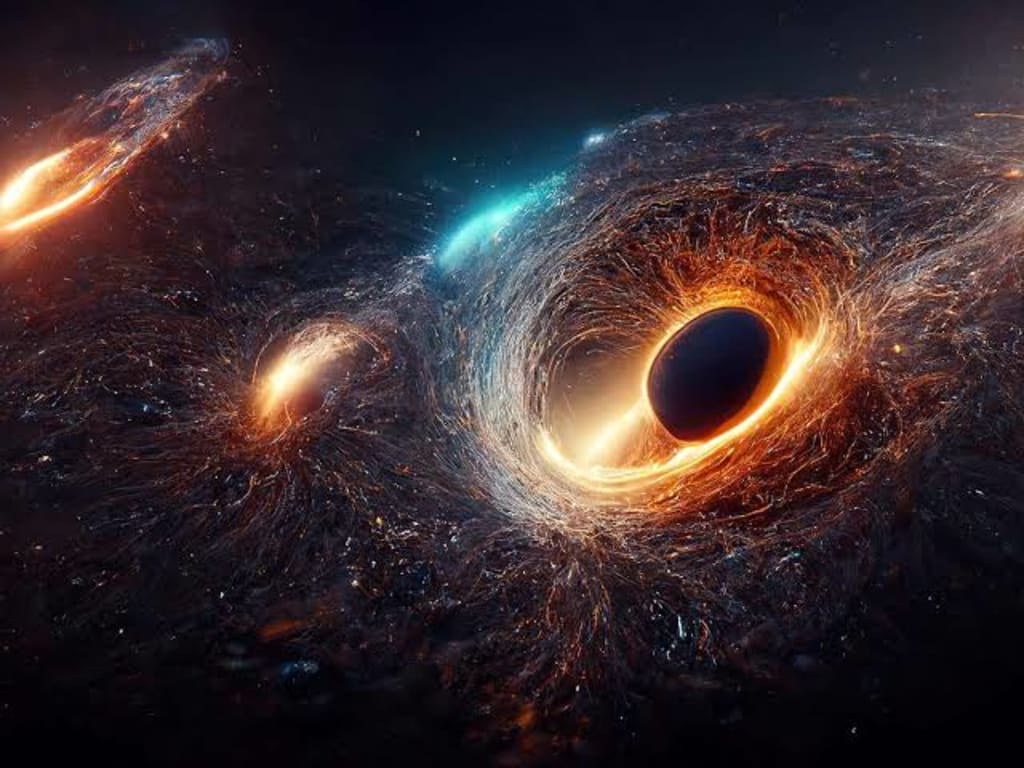Voyage Through the Cosmos: From Our World’s Pale Blue Dot to the Physical Limits of the Universe
Exploring Our Place in the Vastness of Space and Time

# Exploring the Cosmic Scale: From the Earth to the Observable UniverseIn the vastness of space, our beautiful planet the Earth is placed at a very unique position. From the perspective of space science, dramatic reality begins as one moves ‘out there’ into the galaxy and the universe. The Earth as referred to by Carl Sagan as the ‘pale blue dot’ is the background against which all human actions unfold. From this cosmic dust, and without any more preamble, we set off through distances defining our solar system and the universe beyond. In case of the solar system, the closest entity to us is the moon and its average distance is approximately 384000 Kilometers. To put this distance into perspective, imagine driving at a speed of 100 kilometres per hour for over 160 days to get to our moon companion. The observers are left with the impressions of how small the place to live is and that it is endangered with extinction when observing the Earth from the Moon. Farther away we have the Sun—the star that provides light and heat—at a distance of approximately 150 million meters or about one astronomical unit (AU). The time taken by the light to get to the Earth from the Sun is 8 minutes and 20 seconds, which makes one appreciate the size of the solar system. Not only is the sun the source of life in this planet but also the point of reference when searching for the rest of the universe. Mars is the fourth planet of the solar system and the distance between it and the Earth varies due to Mars’ elliptical movement around the sun. Even at its nearest position, Mars is a mere fifty-four million miles from the earth. So, the average distance from the sun reaches 6 million kilometers while the maximum distance is 401 million kilometers. If each area were to move as fast as a commercial airplane, then a trip to Mars will take decades, arguing about the challenges of space exploration.
undefined
The human expansion does not just end at Mars. Launched in 1977 and Voyager 1 is already within the interstellar region roughly 22 billion kilometers away from the Earth. Its famous ‘Pale Blue Dot’ photograph, taken from more than four billion kilometers away, instills lessons on where we stand in the cosmic context as well as the fact that our planet is rather vulnerable.
undefined
Away from the solar system, there is the galaxy field, which is even more extensive, spanning light years upon light years. But our trip to the amazing cosmos does not stop there as we venture out to the immense universe of the galaxy and the space beyond.
undefined
The Milky Way is a large spiral galaxy, measuring some 100,000 light years across, containing billions of stars and planetary systems. Crucially, it demonstrates that our solar system is a virtually infinitesimal speck within this cosmos, highlighting the sheer enormity of the galaxy region.
undefined
Expanding our view even more, we are within the Laniakea Supercluster – a vast structure consisting of millions of galaxies, our own Milky Way and Virgo Supercluster included. Embedded at the center is the ‘Great Attractor’; a sector which influences the movements of galaxies, showing the complex web that guides the behaviors of celestial bodies in the depths of space.
undefined
Finally, exploring the farthest we can look, we find the visible universe, which is approximately 93 billion light-years in size. This enormous region extending to cosmic scales since the Big Bang expansion continues to expand at a rate that surpasses the speed of light, effectively making it nearly impossible to observe. It reminds one of the fact that in terms of size the universe is both vastly large and still expanding.
Beginning from the serene surfaces of our very own Earth to the large cosmic structures, space exploration enlightens the grandeur and versatility of the universe. Every step starting from the moon up to the edge of the observable universe is a new opportunity to witness the marvels of the universe and to reflect on our role and actions towards this one, fragile planet we have.
About the Creator
Jawad Iftekhar Arko
"Exploring the world through words. Join me on a journey of discovery and inspiration as I share articles on a wide range of topics. Let's connect through the power of storytelling. 🌍📖"
Enjoyed the story? Support the Creator.
Subscribe for free to receive all their stories in your feed. You could also pledge your support or give them a one-off tip, letting them know you appreciate their work.






Comments
There are no comments for this story
Be the first to respond and start the conversation.